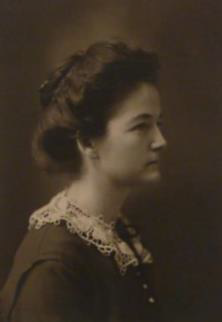Louisa Greear and Michael MacKay, Religious Education
Introduction
As a research assistant for Dr. Michael MacKay and Dr. Gregory Wilkinson, I transcribed journals from missionaries in the Frist Japan Mission. As I transcribed these journals, a particular person really jumped out at me: Edna Harker Thomas. Sister Thomas was not only the wife of the mission president, Elbert Thomas (later a United States Senator), she was also a college educated woman who was involved in the goings on of the mission. Through researching about her life, I was able to gain a greater understanding of her role and the role of women in general in early twentieth-century missiology.
Methodology
To learn about Edna Thomas I read and transcribed journals that she wrote while serving in the Frist Japan Mission. I also transcribed journals written by another missionary from that mission, Elder H. Grant Ivins, and read the mission journals of Jay Jensen. Both of these other missionaries’ journals give me further insight into Edna’s role through what they wrote about her. I felt that it was especially meaningful that I was looking at photocopies of Edna’s actual handwriting. As I looked at the pages I could see the places where the letters were neat and tidy and the places where she had clearly been in a hurry. Much of her writing was written to be given to her daughter, Chiyo, who was born while Edna and her husband were serving in the mission. Probably with her daughter in mind, Edna included lots of little details that really colored the stories in her journal. These primary accounts enabled me to get a good picture of what Edna’s experience in the First Japan Mission was like.
Results
As much as I enjoyed reading primary accounts about Edna Thomas, I was a disappointed that she did not seem more involved in the growth of the First Japan Mission. Although Sister Thomas was learning the Japanese language and did some tracting, her role was more of an assistant to her husband, mother to their child, Chiyo, and nurturing figure to the missionaries. What I found most interesting about Edna’s missionary work in Japan was not the teaching that she did, but the way she was able to connect with the people there. Edna made many friends with the locals, and oftentimes these were just the ordinary people near the mission home, such as the people who sold them food or worked in the garden. Edna also taught the children in the branch where the mission home was, and sometimes had almost fifty children in her class. I had hoped to find an account of a very strong and progressive woman, because that is what our ideals nowadays praise, but instead I found a somewhat quiet woman who shared her love by making friends and being kind, and I have decided that her influence is just as meaningful.
Discussion
I submitted my paper on Edna Thomas to the 2015 Religious Education Student Symposium, was chosen to present at that symposium, and received an honorable mention at the awards ceremony. My paper is also am published in the 2015 Religious Education Student Symposium Journal. In October of 2015, I presented my paper at the Western Conference of the Association of Asian Studies, alongside a panel of others presenting on members of the First Japan Mission.
Conclusion
I feel that my project on Edna Thomas was very successful. There is almost no work done on Edna, so my research into primary documents on her life will hopefully be beneficial to others as well as enriching to me. Edna Thomas was is a wonderful example of how women in early twentieth century missiology found simple means of influencing the lives of those around them and furthering the cause of missionary work.
 Figure 1 – A portrait of Edna Thomas
Figure 1 – A portrait of Edna Thomas
 Figure 2 – Left to right, Jos. H. Stimpson, Elbert D. Thomas, Edna H. Thomas and Jay C. Jensen. 1911
Figure 2 – Left to right, Jos. H. Stimpson, Elbert D. Thomas, Edna H. Thomas and Jay C. Jensen. 1911
